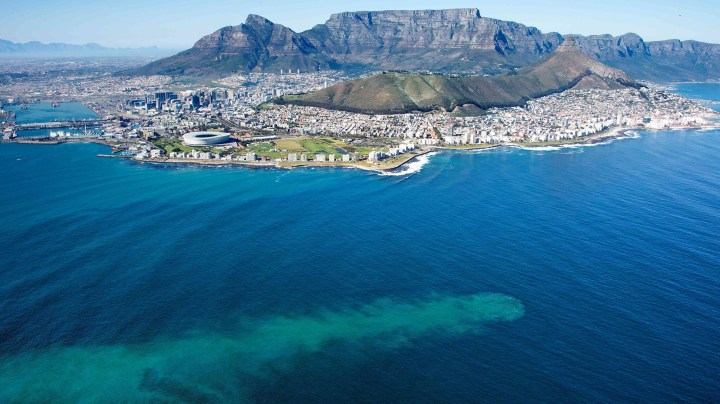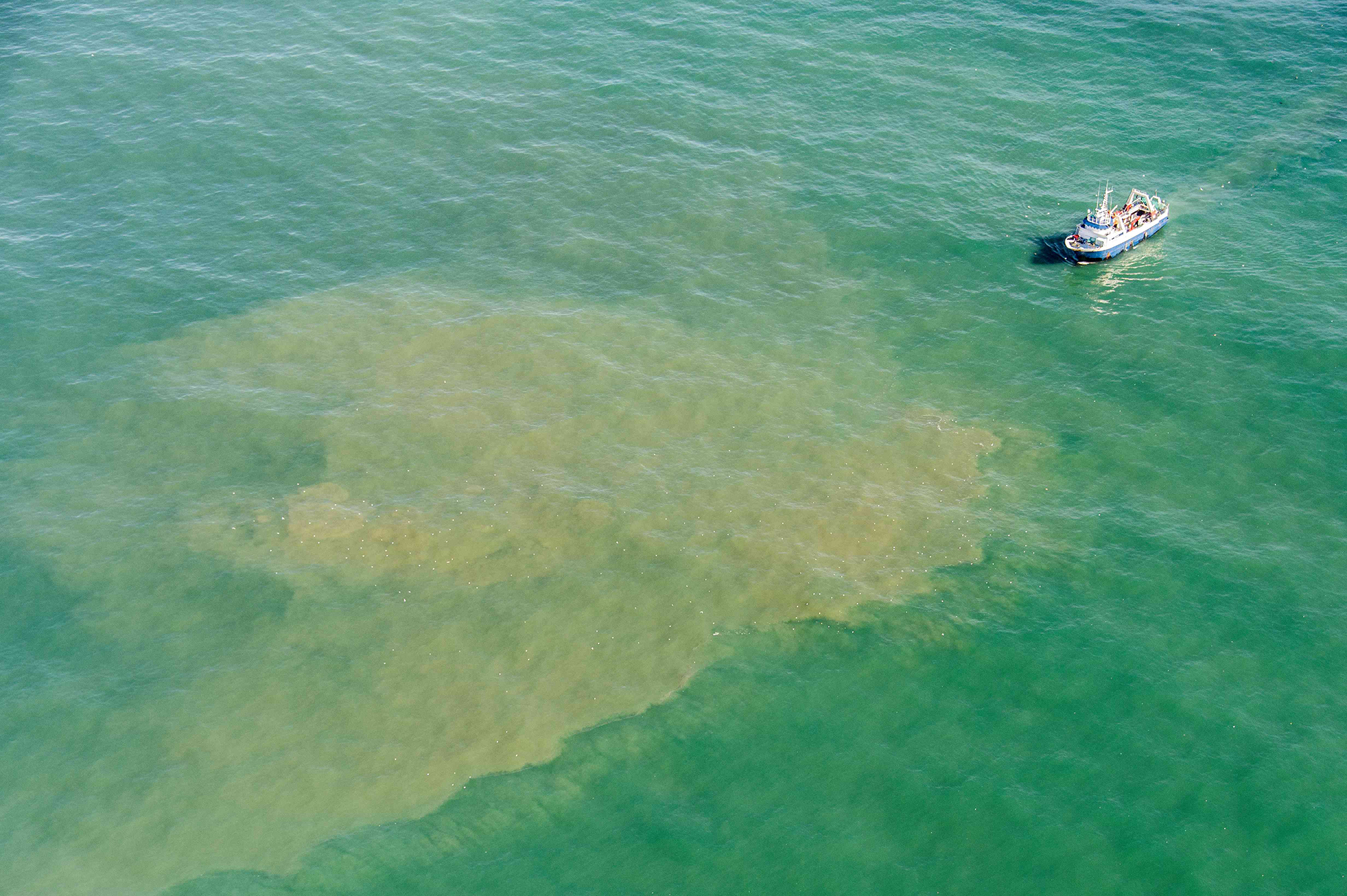OUR BURNING PLANET
Why flushing scarce water into the sea, ‘the world’s biggest toilet bowl’, makes no sense

At a time when cities around the world are struggling to supply life-giving water to a growing number of citizens, researchers have questioned why many coastal municipalities still flush one of the world’s most valuable resources literally down the toilet – while also fouling the sea.
FOR: (The sea) is the world’s largest and most natural treatment plant, and it has some of the most experienced employees as well. Hundreds of species of fish and other marine organisms exist here to do little more than thrive on breaking down the pre-treated effluent discharged into the ocean … It’s the most natural process in the world.” – Sydney Water Board press advertisement, 12 December, 1987.
AGAINST: The City Council’s befouled chickens have come home to roost. In this day and age it should simply not be pumping raw sewage into the sea … How much longer must Capetonians put up with the Council’s casual attitude towards the pollution.” – Cape Times, 17 August, 1989.
The City of Cape Town pumps about 30 million litres of effluent into the sea every day, even though city consultants acknowledge that 99% of this effluent is made up of fresh water. Local wastewater experts also estimate that about 35% of water used in middle and upper-income homes is used to flush toilets.
Two new research reports have disputed the wisdom of flushing human sewage, harmful chemicals, poisonous metals and disease-causing organisms into a vast marine environment which produces seafood for humanity, especially at a time when cities face growing challenges such as Cape Town’s Day Zero crisis.
Cape Town is not the only coastal city that has opted to save on municipal sewage or industrial waste disposal costs by dumping it into the sea – an environment still regarded by some cities as the world’s biggest and most “efficient” toilet bowl and water treatment plant.
The reports also suggest that Cape Town – and other coastal cities – should revise their waste disposal policies to meet the increasing challenges posed by human population growth, pollution, water shortages and climate change.
The first report, published in the latest SA Journal of Science, examines the history of the Green Point marine sewage pipeline which discharges several million litres of semi-treated sewage and some business effluent into the sea surrounding one of the world’s most popular tourist cities.
Written by University of Cape Town researcher Dr Neil Overy, the report concludes that the city has a long history of scrimping on wastewater disposal costs. In short, he says the city has been shnoep on the question of poop disposal since at least 1895 – when a decision was made to start pumping into the adjoining ocean because this was a cheaper option than conventional land-based treatments used by inland cities.
The second report, by the United Nations University Institute for Water, Environment and Health, says that vast amounts of fresh water, energy and nutrients can be recovered from the world’s fast-rising volume of municipal wastewater.
The report estimates that nearly 380 billion m3 of municipal wastewater is produced globally every year – roughly five times the volume of water passing over the Niagara Falls each year, or enough water to fill Africa’s giant Lake Victoria in seven years (or Lake Geneva in less than three months).
The UN University report says municipal wastewater volumes continue to grow, with a projected rise of roughly 24% by 2030 and about 51% by 2050.
Instead of flushing away such valuable resources, it suggests that cities around the world should be investing in plants that can recover clean water, nutrients for fertilisers and smelly gases for energy.
The arid Namibian capital of Windhoek has been recycling wastewater into drinking-quality water for nearly five decades, while Singapore also produces significant volumes of “new water” from municipal waste streams at a time when other cities have opted for extra boreholes or desalination plants rather than purifying municipal wastewater into potable water – or at least into “grey water” for industrial use or irrigating parks and gardens.
The Ethekwini (Durban) municipality – which pumps large volumes of domestic and industrial effluent into the Indian Ocean – has conducted several studies aimed at recycling some of its effluents into potable water, but the first plan was scuppered by political pressure largely based on religious objections to recycling toilet-based wastewater into tap water.
Off the coast of Port Elizabeth, the Coega Development Corporation is also planning to establish a new network of offshore pipelines to extract seawater for industrial use, along with a 3km pipeline to discharge effluent from new industries and fish-processing plants.
Professor Chris Buckley, a founder and co-head of the University of KwaZulu-Natal’s Pollution Research Group, has spent several decades researching ways of reducing pollution from municipal and industrial wastewater; designing new sanitation systems to reduce the volume of water wasted in obsolete sanitation designs and also recovering nutrients from both urine and faeces.
In principle, says Buckley, more cities should be investing in infrastructure to recover clean water from municipal effluents to ward off water shortages caused by urban population growth and climate change.
However, Buckley stresses that there are several caveats, including the need to redesign or retrofit infrastructure to ensure that domestic and more toxic industrial wastewater streams are kept completely separate.
More importantly, Buckley says there has to be stringent quality testing by independent experts and open communication to establish public trust in the safety of recycled water.
To ensure equity, recycled water would also have to be blended into water supply for all communities – not simply those living closest to treatment plants.
Buckley says this could pose engineering challenges, as treatment facilities are often located in low-lying areas – so some recycled water might have to be pumped back up to higher-lying areas.
In the interim, while pilot projects are established and trialled to establish an enduring safety record, cities could make a start by planning for new purification schemes for industrial or outdoor irrigation use – or to supplement ecological water flows in depleted river systems.
Buckley notes that for nearly 20 years, Durban has been reusing significant volumes of its wastewater to supply a major paper mill and fuel refinery, though future separation of industrial and domestic waste sewers would involve advance planning and investment for both retrofitting or new developments.
Unfortunately, he says, global innovation is often hampered by vested commercial interests or political election cycles that encourage business as usual and reduced costs.
This is also one of the problems identified by Overy’s recent research project on the history of Cape Town’s sewage disposal policies. Overy argues that cost-saving and narrow economic interests drove the initial decision to build the city’s first pipeline to dump sewage into the sea off Green Point in 1905.
Complaints emerged just six years later, when turds started washing up on the foreshore rocks.
The City Medical Officer of Health joined those early protests, noting that the incidence rate of enteric fever in Mouille Point was four times higher than other parts of the city, and that sea-borne sewage was the likely cause.
In 1927, sewage was still washing up on the rocks, but proposals to divert and treat this flow on land near the Cape Flats were rejected as too expensive and so the pipeline was simply lengthened to ensure sewage was flushed further out to sea.
But sewage continued to find its way back to land and in 1985 work began on replacing the old leaking pipeline and making it even longer. But this new pipeline was battered and damaged by a storm a few years later – so another new pipeline had to be installed in 1993.

A fishing trawler passes through a plume of sewage discharged into the sea off Cape Town. The city dumps wastewater into sea via three marine pipelines at Green Point, Camps Bay and Hout Bay, along with a fourth pipeline for the Chevron refinery at Milnerton. (Photo: Jean Tresfon (https://www.facebook.com/JeanTresfonPhotography))
“This account of the long history of the Green Point outfall reveals the Council’s consistent approach to the disposal of sewage over many decades. At no point since its completion in 1905, has the Council seriously considered an alternative approach. The engagement with alternatives that has taken place, has been largely performative, more aimed at shaping public opinion in favour of the outfall, than in asking fundamental questions about how the City might be innovative in disposing of its sewage,” says Overy.
“There is little doubt that technological lock-in has featured from the original decision to build the outfall in 1895. As sunk costs in the outfall, the pipe and the pumping station accumulated, it became increasingly difficult to abandon it in favour of alternatives. This situation has been exacerbated by the ever-increasing scarcity and high price of suitable land necessary for potentials like ‘sewage farms’. And every time the Council took a decision to invest in renewing the outfall, it became less likely that an alternative scheme would ever be implemented.”
Overy argues that council decisions have invariably been based on the “cheapest” option, while the political cycle has also created a perverse incentive to minimise costs in the short-term, often at the expense of increased costs in the future.
“The time has come for the Council to think differently about sewage and the sea… There is also the recognition today that untreated chemical and pharmacological pollutants produce environmental ‘slow violence’ as they persist in the ocean and make their way into marine life, and eventually back into humans.”
The Council has consistently denied that the city’s sewage-to-sea disposal poses any significant risks to the marine environment or people.
Responding to questions from Daily Maverick, the Mayoral Committee Member for Water and Waste, Xanthea Limberg, argued that a relatively small quantity of the city’s wastewater was pumped to sea through the city’s three municipal sea outfalls.
During dry weather, she said, the city treated an average of 501 million litres per day, of which only 29 million litres was discharged directly to sea.
The City currently had a combined installed design wastewater treatment capacity of 758 Ml/d, of which more than 92% was treated on land using “the most expensive water treatment technology” (activated sludge) whereas just over 7% was discharged directly to sea.
The Water and Sanitation Department had also increased planned spending on wastewater treatment by approximately 100%, to R11-billion over the next 10 years “to reduce the impact on the environment”.
Limberg said the city had initiated a three-year contract for a “specialist in-depth study of the impact of all three marine outfalls on the marine environment”. This would include detailed dispersion modelling of each outfall.
In the short-to-medium term, engineering consultants would be employed to investigate options for treatment of wastewater currently dumped at sea. There were plans to install ultra-fine screening at the three outfalls and in the long term, the capacity of the three outfalls would not be increased further.
“As they move towards their design capacities, improved primary treatment and secondary treatment will be investigated,” she said, suggesting that there are no plans to close any of them in the foreseeable future.
“It is important to note that the City does not release industrial effluent via the three marine outfalls which are limited to domestic wastewater disposal,” she said – although a CSIR monitoring report commissioned by the city states that Cape Town’s three outfalls contain wastewater from “households, small businesses and other sources in the Woodstock to Bantry Bay, Camps Bay and Hout Bay areas”.
Does Cape Town recycle any wastewater?
“The City has already implemented treated effluent reuse (including treated effluent networks) from a number of its wastewater treatment works, and approximately 12% of the treated effluent is reused for irrigation of sporting facilities, irrigation of public and private landscaping, agriculture, toilet flushing, industrial process water etc.
“This is approximately 57 million litres per day during the summer months – more than double what is currently being discharged from the marine outfalls. The treated effluent reuse networks are constantly being expanded, and new users connected.” DM
For more details, see Cape Town Water Strategy Document.





















 Become an Insider
Become an Insider
Thank you for giving this some attention as there not much awareness of the dangers we face from soil erosion which will eventually curtail human ability to grow food. Phosphate, an essential component of fertilisers is mined in only a few places and is a finite resource. It is estimated to run out by 2040. During day zero time I investigated compost toilets/worm farming and discovered that sewerage would be one of the best ways to replenish the nutrients in our denuded top soil. Soil erosion and water wastage from sewerage absolutely crucial areas for discussion and action. Great business opportunities for sustainable solutions.
From a land use/ urban planning perspective the problem that many coastal metro cities face is that lowest areas (most suitable for sewage treatment plants) are at the seashore. And this land is the most expensive and most valuable for tourism development.